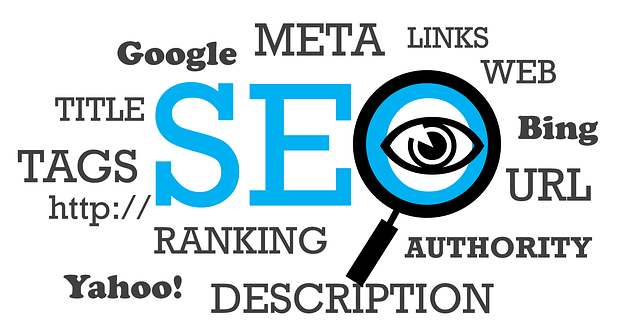Strategic internal linking and a well-structured SEO-friendly website architecture improve user navigation, search engine crawlability, and content organization. This enhances site performance by optimizing silo structures, boosting page authority, improving rankings, increasing user engagement, and providing a better browsing experience. Techniques like content siloing and mobile-first design ensure a structured framework that aids both users and search engines, ultimately driving conversions and organic traffic.
A well-structured website is the cornerstone of any successful On-Page SEO strategy. Among its many benefits, internal linking stands out as a potent tool for enhancing site architecture and crawlability while boosting user engagement. This guide from SEO University by Salterra delves into the fundamentals of internal linking to illuminate why it’s vital for search engine visibility and user experience. We’ll explore how strategic link placement improves search rankings, increases page authority, and contributes to a seamless, SEO-friendly website structure.
- Understanding Internal Linking Fundamentals
- Site Architecture: The Backbone of SEO
- Enhanced Crawlability for Search Engines
- Boosting User Engagement with Strategic Links
- Improving Search Rankings Through Relationships
- Page Authority: A Key Benefit of Internal Linking
- Creating a Seamless User Experience
Understanding Internal Linking Fundamentals

Internal linking is a fundamental component of creating a robust and effective SEO-friendly website structure. At its core, it involves connecting relevant pages within your site to one another, forming a logical network that aids in both user navigation and search engine crawling. Each internal link acts as a digital bridge, guiding users and search algorithms from one piece of content to another related topic. This strategic approach is crucial for establishing a structured website architecture, where information is organized logically, making it easier for visitors to explore and for search engines to understand the site’s content hierarchy.
In the context of Technical Siloing SEO, internal linking for silo structure plays a pivotal role in enhancing site performance. By siloing content into distinct yet interconnected sections, you create a clear framework that allows both users and search engines to quickly identify related topics. This organized approach ensures that relevant pages are linked together, strengthening their individual authority and the overall relevance of your website. As a result, internal linking becomes a powerful tool for improving page rankings, increasing user engagement, and delivering an exceptional browsing experience.
Site Architecture: The Backbone of SEO

A well-designed site architecture forms the backbone of any successful On-Page SEO strategy. It’s more than just a hierarchical layout; it’s a structured framework that helps both search engines and users navigate through a website with ease. At its core, a SEO-friendly website structure organizes content in a logical manner, creating a clear map for how pages are interconnected. This architecture not only improves crawlability but also establishes the site as an authority in its niche.
The concept of SEO-friendly content silos is integral to this process. By organizing content into distinct yet interlinked sections or ‘silos’, websites can create a powerful network of internal links. This On-Page Silo Structure allows for a clearer demonstration of topic relationships, enhancing both the user experience and search engine understanding. Each silo serves as a dedicated section for specific themes, ensuring that relevant content is easily discoverable while maintaining a structured, SEO-friendly environment.
Enhanced Crawlability for Search Engines

A well-structured website with a strategic internal linking strategy significantly improves crawlability for search engines. This means that web crawlers can easily navigate and index your site’s content, leading to better visibility in search results. When pages are interconnected logically, search engine algorithms can understand the hierarchy and context of your information, allowing them to deliver relevant results to users.
Implementing an SEO-friendly silo structure, where related content is grouped together within a clear organizational framework, enhances both On-Page Silo Structure and Navigation Optimization SEO. This approach ensures that each page’s relevance and authority are boosted by linking to complementary content within the site. As a result, search engines can efficiently crawl through your website, capturing all the valuable data it offers, which ultimately contributes to improved rankings and increased organic traffic.
Boosting User Engagement with Strategic Links

A well-structured website, built with a strategic SEO-friendly architecture, acts as a powerful tool to enhance user engagement and drive conversions. Internal linking plays a pivotal role in this process by creating a network of relevant content within your site. When implemented effectively, these links guide users through a logical journey, fostering deeper exploration and increased time spent on the platform.
By employing Content Siloing Techniques or Semantic SEO Silo Techniques, you can organize information hierarchically, making it easier for both search engines and visitors to navigate. This strategic siloing goes beyond mere categorization; it involves creating interconnected topics that build upon each other, resulting in a technical siloing SEO approach that bolsters user experience and encourages exploration. Such an organized structure not only improves crawlability but also keeps users engaged, leading to lower bounce rates and higher rankings over time.
Improving Search Rankings Through Relationships

A well-structured website, built with an advanced silo SEO approach and a thoughtful on-page silo structure, forms the bedrock for boosting search rankings. By organizing content into a logical hierarchy through URL hierarchy planning, each page becomes a crucial node in a network of interconnected information. This structured relationship allows search engine crawlers to understand the context and importance of your web pages more effectively.
When implemented correctly, this strategy enables search engines to establish clear relationships between relevant topics on your site. Consequently, your content gains authority, leading to improved rankings for targeted keywords. A SEO-friendly website structure ensures that your internal links are not just placed strategically but also carry weight in the eyes of search algorithms, ultimately enhancing the overall performance of your online platform.
Page Authority: A Key Benefit of Internal Linking

Page Authority, a crucial metric in On-Page SEO, is significantly boosted by implementing effective internal linking strategies. Each internal link contributes to the distribution of ‘link equity’, passing on value from one page to another within your site. This equity strengthens the overall authority of your entire website, signaling to search engines that your content is reliable and trustworthy.
At Salterra, we emphasize the role of a well-organized SEO-friendly website structure, including Content Siloing Techniques and Navigation Optimization SEO, in achieving this. A Silo SEO Audit can help identify opportunities to structure your site in a way that enhances internal linking, ensuring each page has a clear focus while interconnecting relevant content seamlessly. This not only improves crawlability but also provides users with a logical and engaging experience, ultimately elevating your website’s Page Authority.
Creating a Seamless User Experience

A well-structured website doesn’t just look clean and organized; it actively contributes to creating a seamless user experience. This means that visitors can easily navigate from one page to another, finding relevant information quickly and efficiently. A structured website architecture, coupled with effective internal linking, ensures that each page is connected logically, allowing users to explore content without frustration. For instance, using content siloing techniques to organize related topics under specific categories makes it simpler for both users and search engines to understand the site’s hierarchy.
Moreover, with a mobile-first approach, optimizing for mobile site siloing becomes crucial. Given that a significant portion of web traffic originates from mobile devices, ensuring that your website adapts gracefully to different screen sizes and provides an intuitive user experience is paramount. This not only enhances user engagement but also signals to search engines that your site is optimized for all users, regardless of their device preference, reinforcing the overall SEO-friendly website structure.
